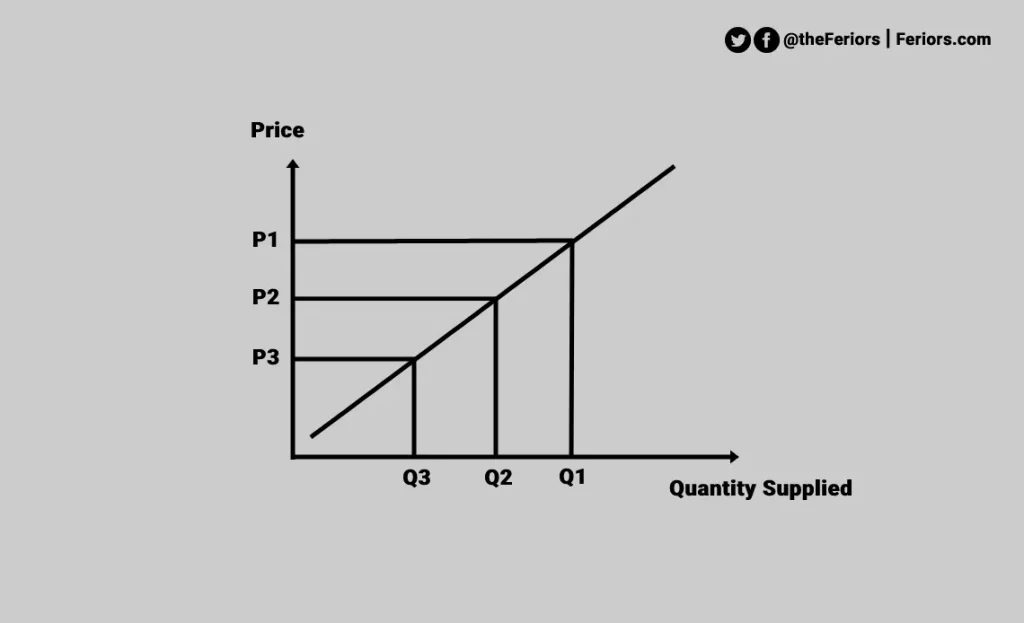What is the Law of Supply
Law of supply is an economics theory that states that the price and quantity supplied of a good are related to each other. The law of supply state if the price of a good increase (by demand of the buyer), then the seller increase the supply of that good.
In contrast, when the price of a good decrease (when the buyer no longer wants it), then the seller decrease the supply of that good in the market.
As with the law of demand, the law of supply assumes other things are held constant but the price and quantity supplied of a good are directly related to each other:
- Quantity supplied rises as the price rises.
- Quantity supplied falls as the price falls.
To put it simply, the more people want something, the cheaper it becomes. As long as demand remains high, prices will remain low. When demand begins to drop, prices begin to increase.
Supply Curve
The supply curve is a graph representing the relationship between price and quantity supplied. The supply curve is an upward slope that tells us that the quantity supplied varies directly in the same direction with the price.
These changes suggest that as production costs increase, producers will supply the same quantity of goods at higher prices. As you can see from the graph below, a shift in the supply curve to the left means that the price must also rise to maintain the same quantity. The supply then moves to the right, which means the same supply will enter the market at a lower price.

Suppliers tend to increase the number of products sold on the market to make more money when prices rise. As mentioned above, the best deal for suppliers is to increase their supply when the price of a product rises. If the demand for the product in the market increases, the supplier can raise the price and bring more products to the market. In other words, when the price that buyers pay for a good increase, the supplier increases the supply of that good in the market.
Increasing the price almost always results in an increase in the quantity offered, while lowering the price reduces the quantity offered. As the price goes up, there is a tendency to increase the supply because more profit can now be made.
Shifts in Supply Curve
A shift in supply results from a change in any cause other than a change in price. It is a shift in the entire supply curve. Changes in price cause changes in quantity supplied. If the supply is affected by anything other than price, that is, by a shift factor of supply, there will be a shift in supply.
Shift factors of the supply curve include:
- Price of inputs
- Technology
- Expectations
- Taxes and subsidies



